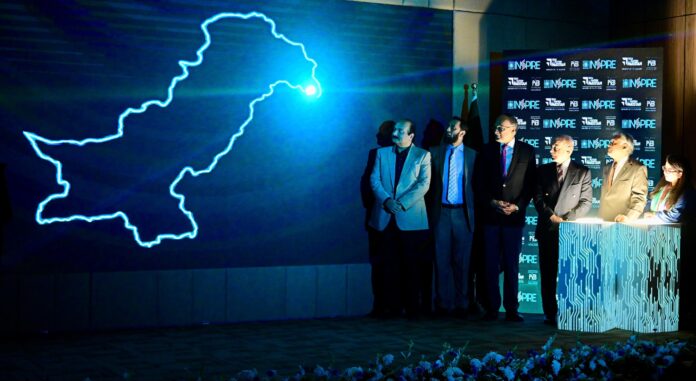Copyright forbes

By Qiao Zhang, Program Director, Executive Education at ESMT Berlin For much of modern business history, power has meant control – over people, resources, and outcomes. It was defined by hierarchy and authority, celebrated within a narrow definition of success built on command and competition. But what if the very model that once built success is now holding us back? When a group of senior female leaders gathered at ESMT Berlin for our Women in Power program, I asked a simple question: “What does power mean to you?” Portrait of a young woman showing her arm and strength The room fell silent. Then, slowly, the answers surfaced: Power became water – fluid, essential, everywhere. It became a bridge that connects people and ideas. It became the conductor of an orchestra, aligning harmony without playing a single note. No one spoke of dominance or control. They spoke of listening, courage, authenticity, and connection. For them, power wasn’t only something to hold. It was something to use well – to create change, strengthen others, and act with courage in complexity. MORE FOR YOU How leaders exercise power Power is “the means leaders have to potentially influence others” (Antonakis & Day, 2017). In the past decade, technology, hybrid work, and disruption have transformed business from stable hierarchies to fluid, interdependent networks – demanding a fundamental shift in how leaders understand, share, and exercise power. Sturm, Herz, and Antonakis (2021) describe a shift in leadership thinking from positional “power over” others to relational and contextual “power to” influence and achieve collective goals. And McKinsey’s 2023 report “New Leadership for a New Era of Thriving Organizations” provided examples of how companies moving beyond command, control, and competition led to sustainable growth. The digital, networked, and interdependent world has shifted the very basis of power: from positional-based to relational-based, from leader-centric power to distributed, and from claiming reward to honoring responsibility. Women listening together, working together in a team From positional power to relational power Hybrid work has fragmented proximity and information symmetry, making positional power alone insufficient to command engagement. Gallup’s longitudinal studies of more than 183,000 business units found that teams led by relationally connected managers achieve 23 percent higher profitability and 43 percent lower turnover than those led through authority alone. This shift redefines leadership: no longer about controlling access to information, but curating meaning, building psychological safety, and connecting people across boundaries. Connection-based, or relational, power is not about being “nice.” It is about being effective in a networked world where collaboration drives results. Research by Professors Gianluca Carnabuci and Eric Quintane at ESMT shows that leaders who act as bridge-builders – connecting people who would not otherwise collaborate – create networks that are both more innovative and more resilient. From leader-centric power to distributed power The female leaders in our program often described power with metaphors drawn from nature: water, light, balance, gravity. These images reveal a profound truth – modern power is fluid, not fixed. Leadership research increasingly shows that power and authority can – and should – be shared. A study of 26 engineering design teams in China (119 individuals) found that higher levels of shared leadership correlated with significantly greater task performance and team viability. Other longitudinal studies from 142 groups found that as leadership becomes more distributed, trust and collaboration grow, leading to sustained performance. In short, distributed power doesn’t diminish authority; it expands its impact. From reward to responsibility Across all Women in Power discussions, one theme surfaced again and again: responsibility. Power was a form of stewardship, defined by responsibility and purpose rather than personal achievement or hierarchical status. A meta-analysis of ethical leadership research confirms that responsible power leads to higher trust, engagement, and organizational justice. The 2025 Edelman Trust Barometer shows that public trust in CEOs continues to decline, while expectations for fairness, credibility, and accountability have risen sharply. In this landscape, moral power is becoming an increasingly important form of leadership strength. It calls for leaders to use influence not for personal gain but for the collective good, and to turn purpose into consistent practice. Strength in collaboration Three practices to mindfully exercise power As the shift unfolds, every leader must use power with greater intention and impact. Here are three simple practices: 1. Lead through connection, not correction. In moments of disagreement or tension, resist the impulse to fix or defend. Instead, listen to understand and relate. Connection is grounded in curiosity, not in consensus. 2. Share power consciously. Invite others into decision-making, especially when it feels easier to decide alone. Influence multiplies when people feel trusted to contribute. 3. Anchor influence in integrity. Before taking a stand or making a choice, ask: Does this align with our purpose? Used responsibly, power builds trust – the invisible currency of lasting leadership. Beyond gender These insights, developed through a women’s leadership program, apply broadly. Power depends on how individuals choose to use it, not on their gender. Every leader can reshape power through daily mindset and behavior: to replace control with trust, self-interest with shared purpose, and fear with meaning. Power functions as a practice, not a possession. Everyone shares the responsibility to exercise it with clarity, connection, and conscience. Editorial StandardsReprints & Permissions



